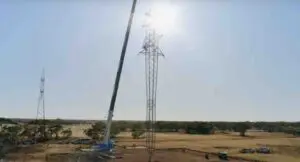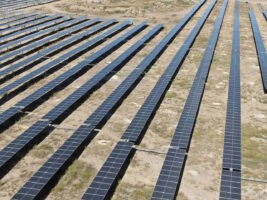South Australia may be the swing state in the National Electricity Market.
By now we all know that futures and pool prices for elecrtricity are higher in South Australia than elsewhere in the NEM. What’s perhaps less appreciated is the impact this has on the other States.
Over the past 3 years South Australia has had net exports about 23 per cent of the total half hour settlement periods in the market, and has had net imports 77 per cent of the time.
The average pool price in NSW, Victoria and Qld is $4.80 lower, or about 10%, when South Australia is exporting as compared to when its importing. (We have excluded Tasmania from this analysis for various reasons including the recent transmission outage).
In recent months the proportion of exports has fallen to about 10%, but the impact on prices when it is exporting has increased to about $10/MWh. These results from this small study show that prices not just in South Australia but elsewhere in the NEM tend to be lower when there is a wind driven surplus of generation in South Australia.
Fig 3 below shows the gap between the average price in Vic, NSW and QLD when SA is exporting compared to when its importing. This is just the difference between the the two lines in Fig 2.

This data alone is far from proving that wind generation in South Australia has a dampening impact on prices NEM wide, not just in South Australia, but it is suggestive.
To look at the impact of wind on NEM wide prices (excluding Tas) we used NEM review to download the half hourly price and wind data over the same 3 year period. This is about 52,000 rows in a spread sheet, so we are glad we aren’t doing it by hand.
Our hypothesis is that there is a negative correlation between the average pool price in QLD, NSW and Vic and the total amound of wind generation in the NEM. This would be the case if marginal pricing is important. Wind is still a small part of total generation, but pricing in the NEM is set at the margin.
The raw correlation is -2%. That’s in the right direction but statistically insignificant.
To check these results we took the highest 200 half hours of wind output and looked the average pool price in Vic, NSW & QLD and the lowest 200 half hours of wind compared to the average pool prices in those hours. The price difference was about $4/MWh.
Again, not too much can be taken from this, but it is consistent with the view that when the wind blows it suppresses the pool price. The same could know doubt be said of PV.

David Leitch is principal of ITK. He was formerly a Utility Analyst for leading investment banks over the past 30 years. The views expressed are his own. Please note our new section, Energy Markets, which will include analysis from Leitch on the energy markets and broader energy issues. And also note our live generation widget, and the APVI solar contribution.








